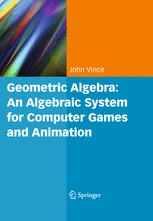

Most ebook files are in PDF format, so you can easily read them using various software such as Foxit Reader or directly on the Google Chrome browser.
Some ebook files are released by publishers in other formats such as .awz, .mobi, .epub, .fb2, etc. You may need to install specific software to read these formats on mobile/PC, such as Calibre.
Please read the tutorial at this link: https://ebookbell.com/faq
We offer FREE conversion to the popular formats you request; however, this may take some time. Therefore, right after payment, please email us, and we will try to provide the service as quickly as possible.
For some exceptional file formats or broken links (if any), please refrain from opening any disputes. Instead, email us first, and we will try to assist within a maximum of 6 hours.
EbookBell Team

4.0
56 reviewsThe true power of vectors has never been exploited, for over a century, mathematicians, engineers, scientists, and more recently programmers, have been using vectors to solve an extraordinary range of problems. However, today, we can discover the true potential of oriented, lines, planes and volumes in the form of geometric algebra. As such geometric elements are central to the world of computer games and computer animation, geometric algebra offers programmers new ways of solving old problems.
John Vince (best-selling author of a number of books including Geometry for Computer Graphics, Vector Analysis for Computer Graphics and Geometric Algebra for Computer Graphics) provides new insights into geometric algebra and its application to computer games and animation.
The first two chapters review the products for real, complex and quaternion structures, and any non-commutative qualities that they possess. Chapter three reviews the familiar scalar and vector products and introduces the idea of ‘dyadics’, which provide a useful mechanism for describing the features of geometric algebra. Chapter four introduces the geometric product and defines the inner and outer products, which are employed in the following chapter on geometric algebra. Chapters six and seven cover all the 2D and 3D products between scalars, vectors, bivectors and trivectors. Chapter eight shows how geometric algebra brings new insights into reflections and rotations, especially in 3D. Finally, chapter nine explores a wide range of 2D and 3D geometric problems followed by a concluding tenth chapter.
Filled with lots of clear examples, full-colour illustrations and tables, this compact book provides an excellent introduction to geometric algebra for practitioners in computer games and animation.